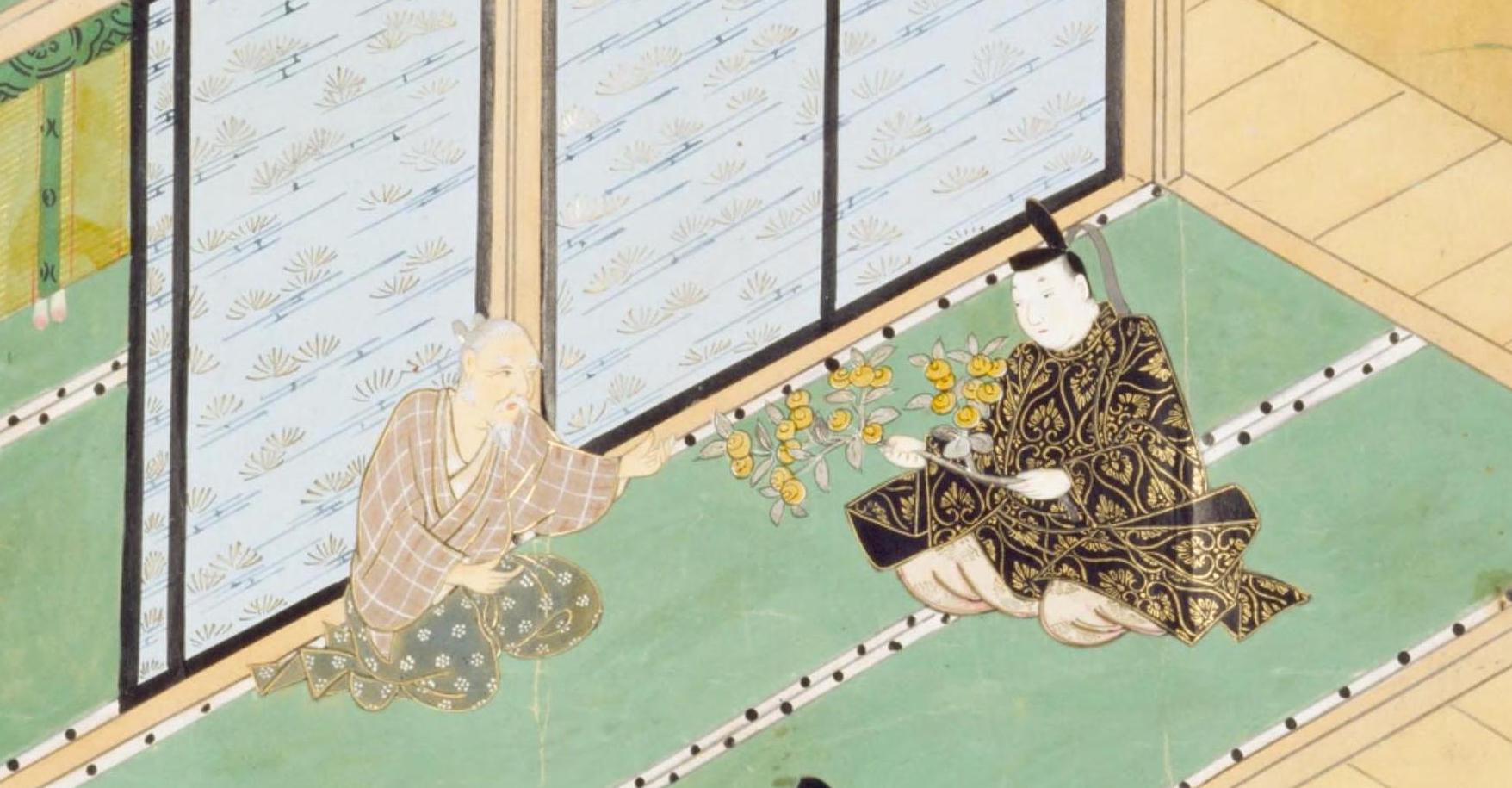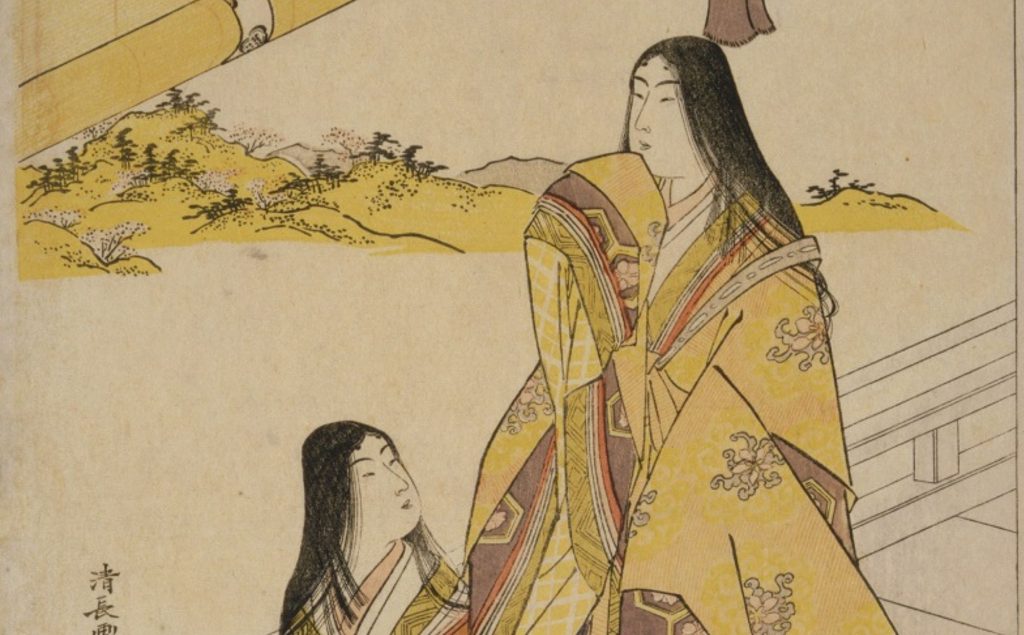Dressing and adorning oneself with glittering jewellery. There lies the human desire to be beautiful and to add colour to one’s life. In our new series ‘Biso (美装) no Nippon: Japanese History of Dressing Up’, writer Sawada Toko traces the history of various ornaments and jewellery, and explores the mysteries behind the act of dressing up.
Texts Sawada Toko
Jewellery depicted in ‘Taketori Monogatari’
Kaguyahime, a well-known story in picture books and animations, is based on the Taketori Monogatari (竹取物語), which was established around the late 9th or early 10th century. In this story, where a young girl born from a beautiful bamboo, rejects her many suitors, including the mayor, before returning home to the moon, you may remember that a certain piece of jewellery appears.
It appears in the scene in which Princess Kaguyahime presents the five noblemen who had come to court her, with various challenges in the hopes that they would give up. Princess Kaguyahime asks a man called Prince Kuramochi(車持皇子) for a treasure called the ‘Horai no Tama no Eda(蓬莱の玉の枝)’, which has a silver root, a golden stem and a white jade fruit.
Horai is a place thought to be at the far ends of the eastern sea, where you may find hermits. It is a foreign land whose existence is not even known. Prince Kurumochi pretended to sail away from the harbour and returned home secretly, where he built a house where no one could easily come near and summoned six first-class blacksmiths. He himself hides in the same house as them and invests all his money to have a treasure branch made. Three years later, he pretended to have just returned from Horai and brought the completed branch to Kaguyahime, but to his surprise, the craftsmen came to him and made a fuss, saying that they had not yet received their wages for making the treasure branch, and the prince’s lie was exposed before it could be revealed. –This is the story behind ‘Horai no Tama no Eda’.
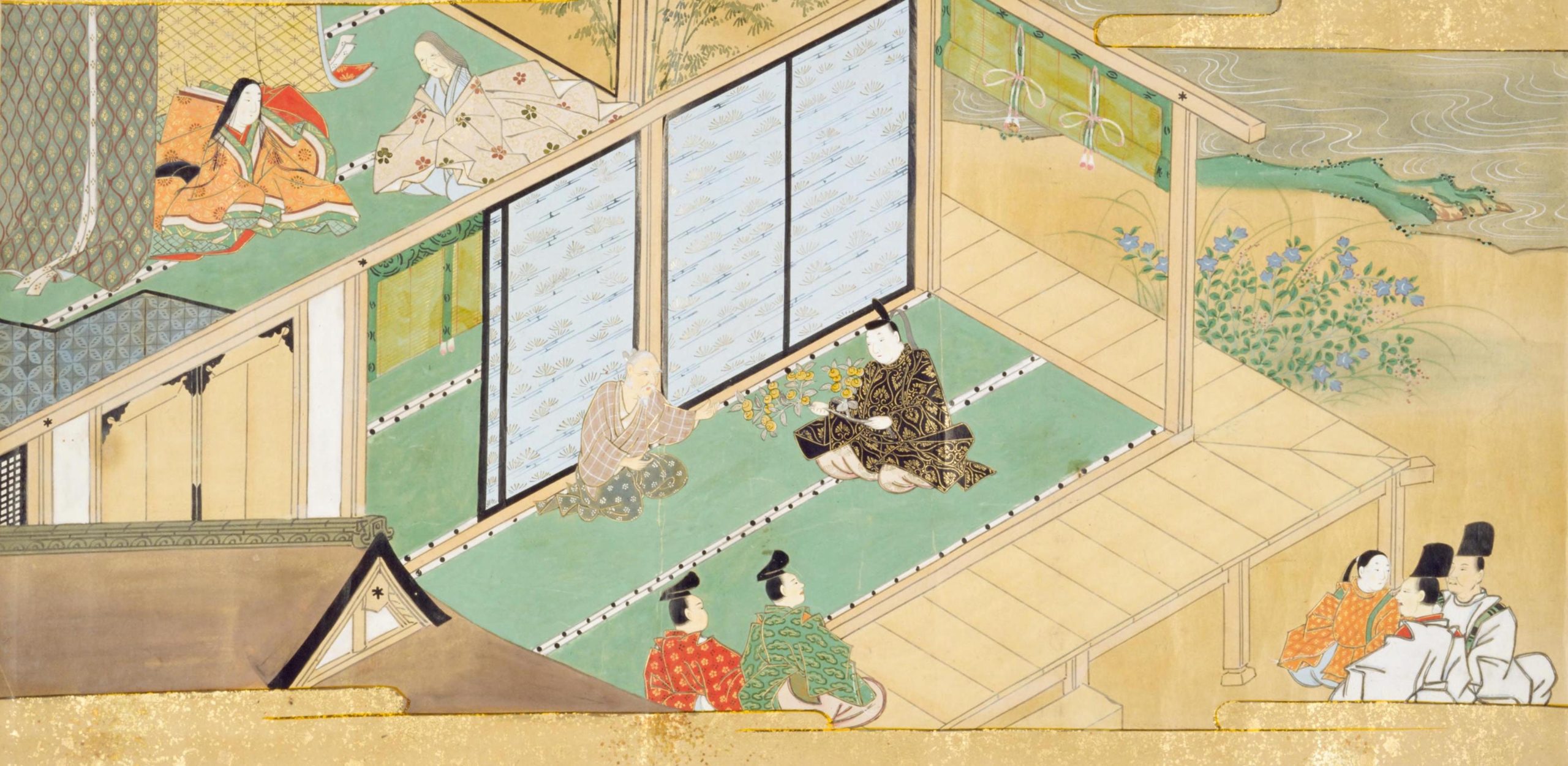
Of course, this is only a story. It does not mean that the ‘Horai no Tama no Eda’ was actually produced, but it is noteworthy that in the Taketori Monogatari, one of these craftsmen refers to himself as ‘Ayabe no Uchimaro , an artisan of the Nai shoryo(内匠寮)’.
The Nai shoryo was a government office established in the Nara period and was in charge of the production and decoration of miscellaneous court vessels. As of 809, more than 100 painters, gold and silver workers, woodworkers and other craftsmen are said to have belonged to the office, so although it is formally a government office, in reality it would be more appropriate to think of it as a government-run workshop. ‘Engishiki(延喜式)’, a legal document established in the first half of the ninth century, describes a variety of items made by such craftsmen in the nai shoryo, including woodwork such as Byobu(屏風) and Kityo(几帳), as well as items such as Hakudo karo(白銅火炉) (alloy braziers) and silver chopsticks.
The author of Taketori Monogatari probably chose a craftsman from the Nai shoryo as the maker of the Horai no Tama no Eda because he thought that someone from a workshop directly under the court would have the skills to create a treasure that no one had ever seen before. In fact, however, jewellery such as gold, silver and jade was relatively familiar to court nobles of the Nara and Heian periods.
For example, one of the belts worn by court officials and aristocrats was ‘Sekitai(石帯)’. As a rule, it was made of cowhide and coated with black lacquer. It has a metal clasp called ‘Sasuga(刺金)’ at the end, and is worn around the waist through holes in various parts of the belt – in other words, it has exactly the same structure as the belts we know today.
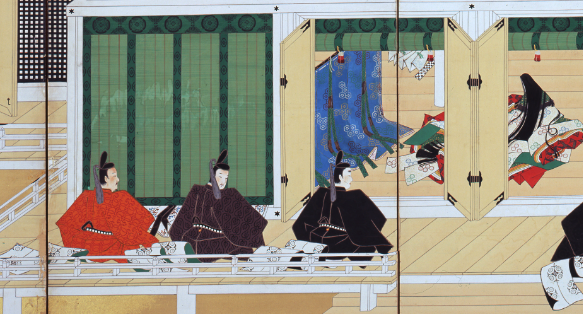
As the name suggests, Sekitai had square or round decorative stones on the belt part, with high-status nobles using belts with gold and silver-plated stones on copper, and low-status nobles and officials using belts with black-lacquered stones on copper. The Engishiki, mentioned above, records the details of the making of the ‘meno(馬瑙/瑪瑙) waist belt’, a stone belt with agate used by the emperor, the main material of which was leather, measuring 7 shaku(尺) (about 210 cm) in length and 6 sun(寸) (about 18 cm) in width. The agate is said to be made of a stone 4 sq. in. in diameter (about 12 cm square), so it must have been a very heavy belt.
Persian agate, a favourite of the Heian aristocracy
The Shosoin Treasures, which date back nearly 200 years to the Engishiki period, include an item called the Konsekitai Zanketsu(紺石帯残欠), which was among the treasures of Shosoin, mainly objects belonging to Emperor Shomu, who lived during the late Nara period. Originally broken into five pieces, it was joined together during restoration in 1974, but because some parts were still missing, the stone belt is still preserved in two separate pieces. It is 156 cm long and 3.3 cm wide. As the name ‘Konseki(紺石)’ suggests, it is a very beautiful band decorated with blue and white mottled lapis lazuli.
Lapis lazuli is still a popular stone loved as the birthstone for September or December. However, as it is not produced in Japan, it is thought that the stones decorating the remainder of this dark blue stone belt were brought all the way from the Middle East via the Silk Road.
Other items in the Shosoin include a ‘Hanbai on-obi zanketsu(斑貝御帯残闕)’, which is a belt decoration made from luminous shells. The belt itself has been lost, and only the shell decoration, which have been immaculately shaped, hints at how magnificent the rest of the belt must have been.
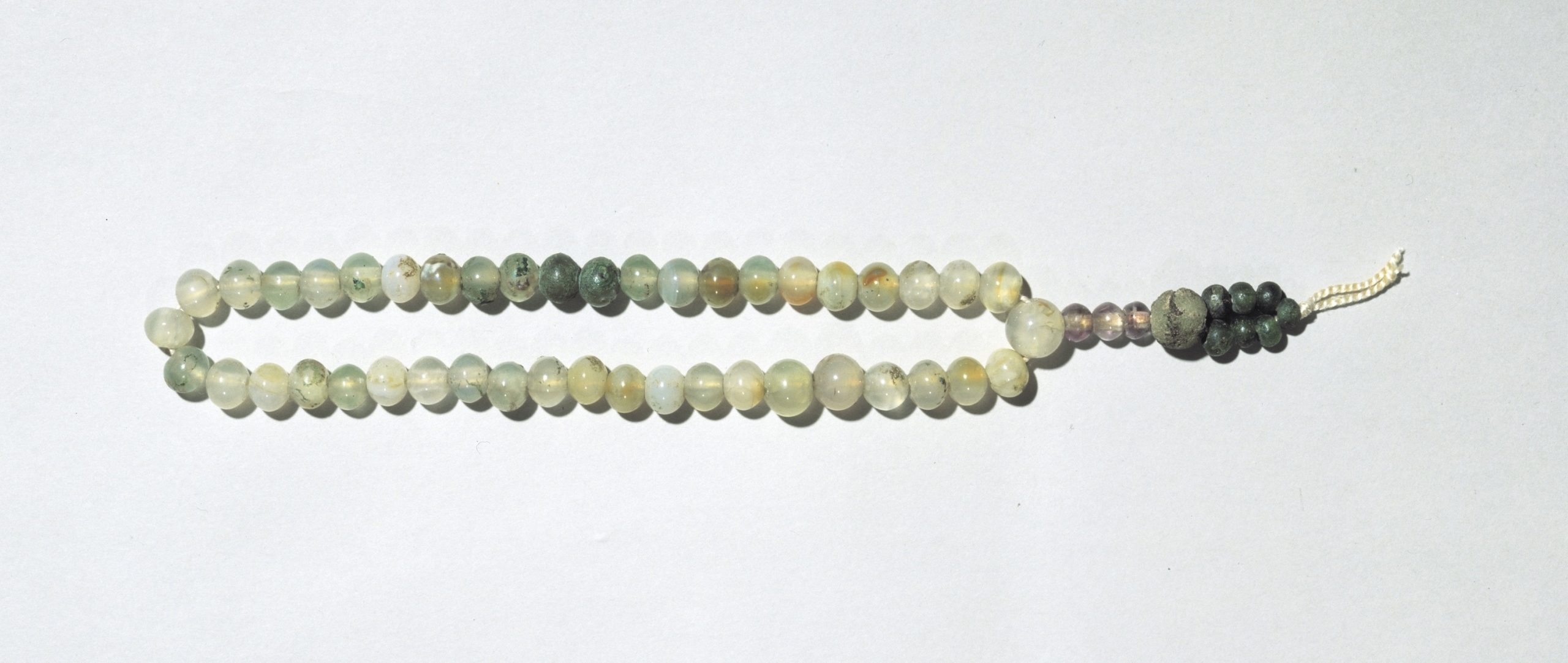
According to historical sources, there were various other types of stone belts, such as the ‘Usai kaku obi(烏犀角帯)’ decorated with black rhinoceros horns or buffalo horns, the ‘Hanzai no obi(斑犀帯)’ decorated with spotted horns, and the ‘shiratama obi(白玉帯)’ decorated with white jade. These belts differed in rank according to the stones decorated, with the white jade belt being the highest type of belt. Rhinoceros horn belts were also said to be of lower grade than those decorated with jade, such as white jade belts and agate belts, and among these, the Hanzai no obi was considered to be of higher quality than the Usai kaku obi.
In ‘Utsuho Monogatari’ (Tales of Utsuho), a story written a little later than the Taketori Monogatari, there is a scene in which a stone belt handed down from generation to generation of a particular family, goes missing. It is said that even the emperor of the time was envious of this belt and asked for it to be handed over to him, but the value of a stone belt decorated with various strange stones must have been unimaginable to us today.
Agate, in fact, has been produced in Toyama and Shimane prefectures since ancient times, and is often used in the manufacture of magatama(勾玉) and kudatama(管玉). However, in a Heian-period dictionary called ‘Wamyouryuujusho (和名類聚抄)’, the term ‘Hashi (波斯) meno obi’ can be found. Hashi” is the name of a place in Sasanian Persia, now Iran. In other words, there were agate belts in Japan at that time that were made from foreign agates, not domestically produced agates.
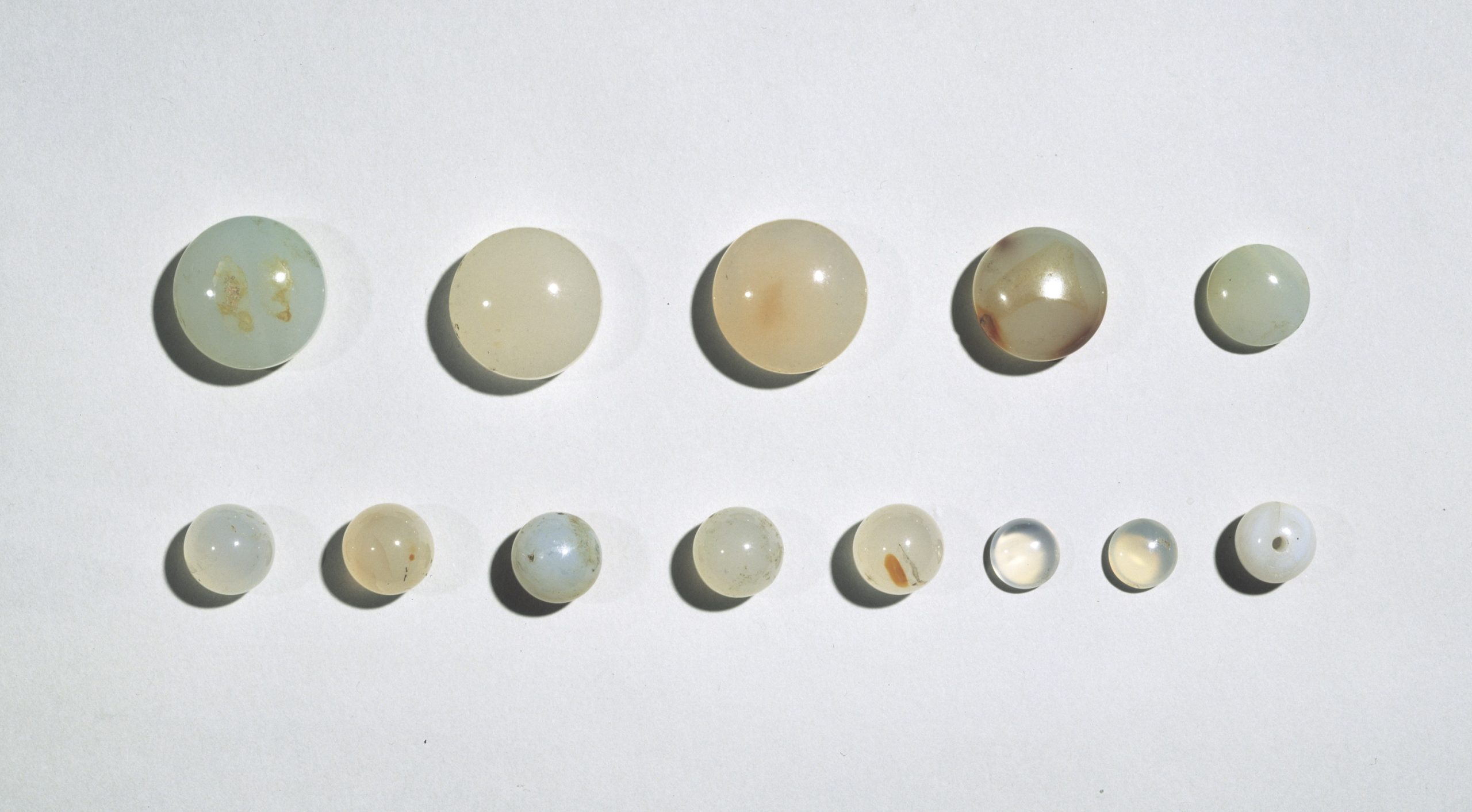
In the book ‘Shin Sarugakuki(新猿楽記)’, written in the late Heian period, the name “meno obi” is mentioned as one of the imports from the continent at that time. It is conceivable that the ‘Hashi meno obi’ was imported in the form of a belt, but it is also possible that only the agate was imported and processed in Japan. If this is the case, then naturally a skilled craftsman would have been selected to process the precious foreign agate, and it may well have been a craftsman from the Nai shoryo, the same as the one who made the “Horai no Tame no eda”.
Unlike the aristocrats and emperors who used expensive obi, the names of these craftsmen, who were merely technicians, are almost entirely absent from historical records. However, behind the jewellery that reminds us of the glamorous lives of people in ancient times, lies the extraordinary artistry of these many unsung figures.
Sawada Toko
Born 1977, Kyoto. Graduated from Doshisha University, Faculty of Literature, and completed the Master’s course at the same university. She made her debut in 2010 with ‘Koyo no Ten(孤鷹の天)’, which won the Nakayama Yoshihide Literature Award(中山義秀文学賞); won the Shinran Prize(親鸞賞) in 2016 for ‘Jakuchu(若冲)’ and the 165th Naoki Prize in 2021 for ‘Hoshi Ochita, Nao(星落ちて、なお)’.
This article is translated from https://intojapanwaraku.com/culture/221916/






